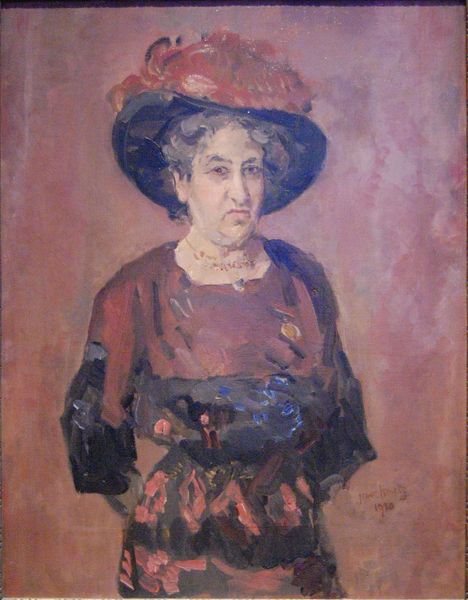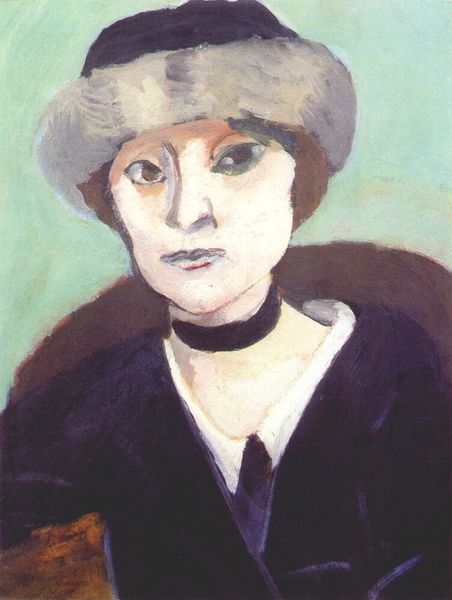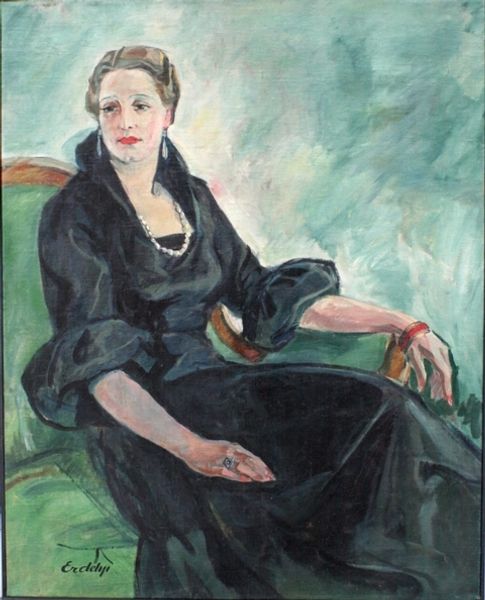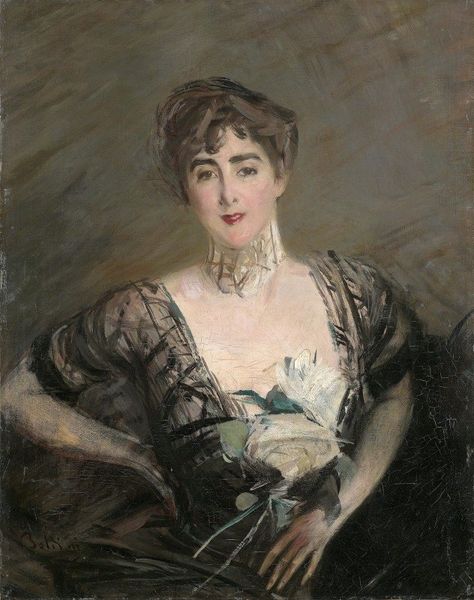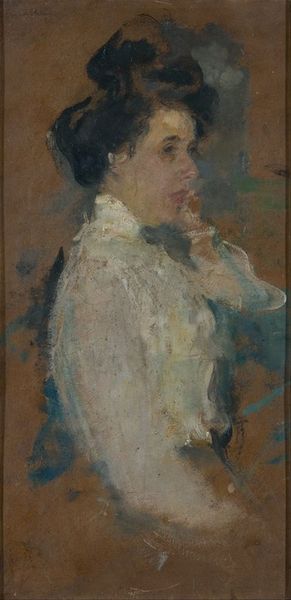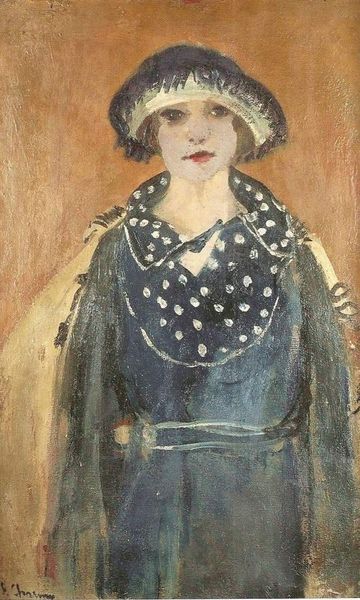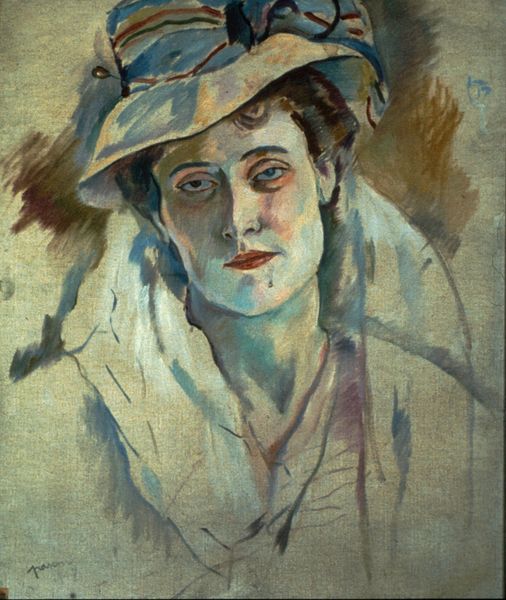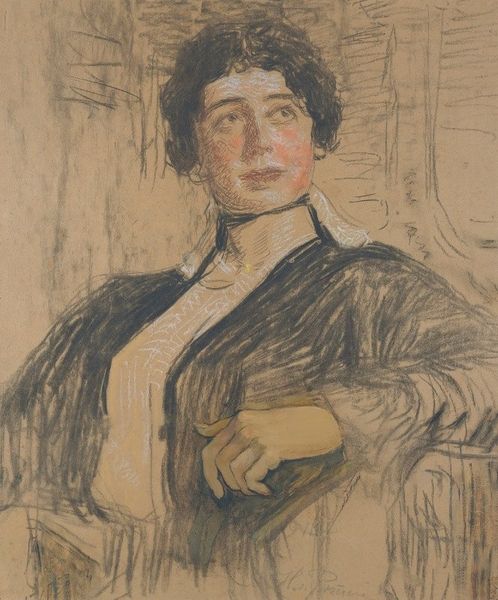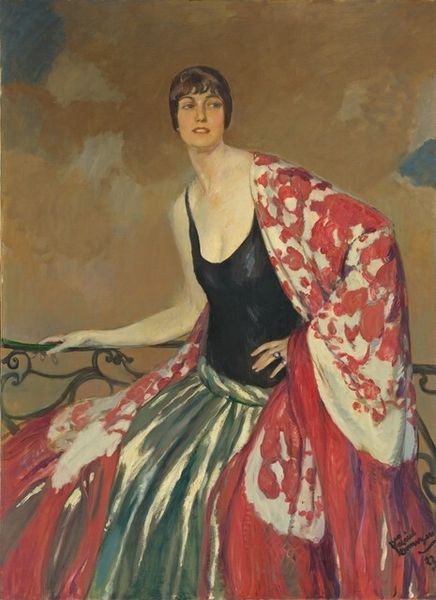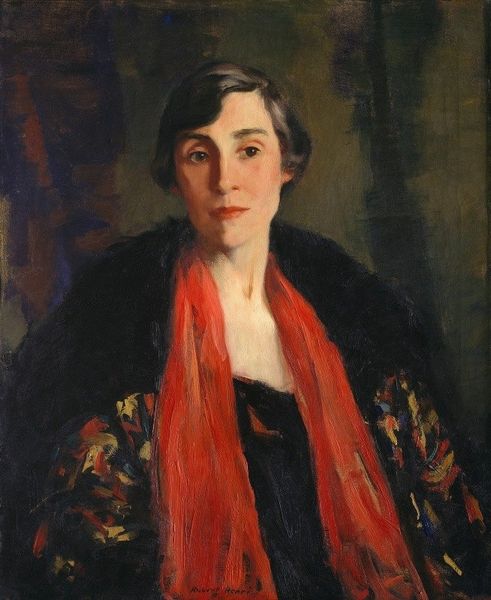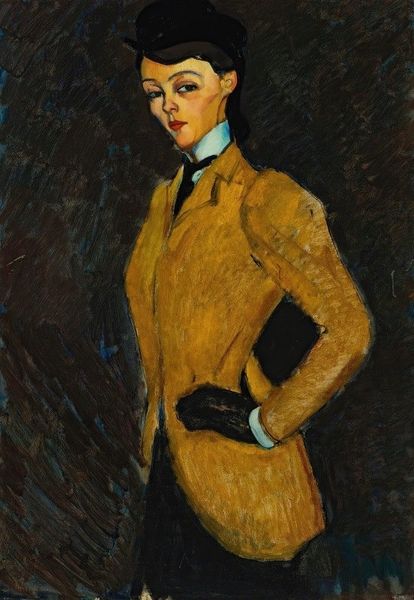
Copyright: Public domain
Curator: Looking at Boris Grigoriev's 1917 painting, "Portrait of Anna Grilikhes," I’m struck by its understated elegance. Editor: The textures catch my eye immediately—especially the fur stole. You can almost feel the weight and the individual hairs. Was fur readily accessible at this time, I wonder? Curator: This portrait captures a fascinating moment. Painted just before the Russian Revolution truly took hold, it reflects the anxieties and shifting social landscape. Grigoriev often explored themes of societal unease. The art world was becoming increasingly politicized and the position of art in society was hotly contested. Editor: The way he's built up the paint, that impasto technique... it really emphasizes the tactile quality. The almost sculpted surfaces of the fur and even the sitter's face draws my eyes across it. It would be interesting to know what kind of brushes he favored, what grade of canvas was in use, and if wartime shortages may have affected those material choices. Curator: Interesting point. Considering Intimism as a thematic approach is appropriate here as it emphasizes domestic scenes and private moments. There's an air of quiet contemplation in Anna Grilikhes' expression. There’s an accessibility; yet there's a sense of remove, she looks out but at the same time withdraws. One could ask what purpose this work might have served. Was it a commission? A labor of love? Editor: And think of the labour invested—preparing the canvas, mixing pigments, applying layer upon layer of oil. And who created that gorgeous fur piece, that frames the portrait and signals her elevated status so emphatically? So much hidden in plain sight. Curator: The rise of modernism shifted our understanding of art. Rather than focusing solely on historical narratives, artists, like Grigoriev, were pushing to represent internal experiences of change. He documented social upheavals through individual emotions, through a private lens in this intimate piece. Editor: Seeing the traces of that labor and material culture woven together enriches my understanding so much. Curator: Indeed. Grigoriev allows us to consider Russia, just before monumental change through the eyes of an individual. Editor: And that combination, the materials and the woman... It becomes a layered commentary on that specific time. Thank you.
Comments
No comments
Be the first to comment and join the conversation on the ultimate creative platform.
